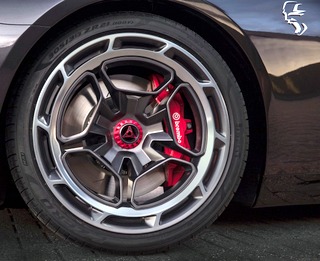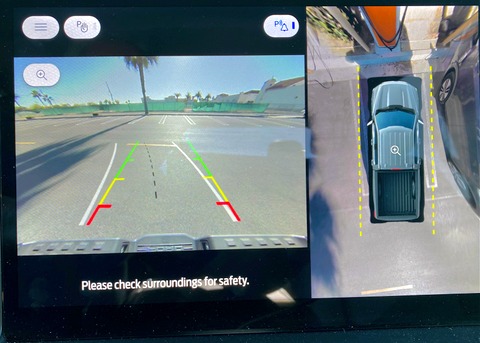Tips to Help Make an Informed Car Purchase Decision
This article may contain affiliate links.
During a test drive, focus on evaluating the vehicle’s performance, comfort, safety features and overall condition. Pay close attention to how the car handles, its responsiveness, interior ergonomics and any unusual noises or vibrations. These factors will help you determine if the vehicle meets your needs and is worth the investment.
Table of Contents
- What to Check Before Starting the Test Drive
- Key Performance Factors to Evaluate During the Drive
- Safety Features That Matter Most
- Post-Test Drive Checklist: Final Steps
Buying a car is one of the most significant investments you’ll make, and a test drive is your chance to ensure that the vehicle meets your expectations. Beyond just checking if it runs smoothly, a test drive allows you to experience firsthand how the car feels on the road, whether it suits your lifestyle, and if it aligns with your long-term needs.
Imagine cruising down Calgary or any major city’s streets in a car that not only performs flawlessly, but also looks immaculate year after year. After you’ve made found your perfect car, that’s where ceramic coating services come into play. By applying a durable ceramic coating, you can shield your vehicle from harsh weather, road debris and daily wear—preserving its appearance and value for years to come.

Let’s dive into what you should look for during a test drive to make sure you’re making the best decision for your next vehicle.
What to Check Before Starting the Test Drive
Before you even turn the key, take a few moments to inspect the vehicle thoroughly. This step is crucial because it sets the foundation for identifying any potential red flags early on. Here’s what you should focus on:
- Exterior Condition: Walk around the car and examine its bodywork. Look for scratches, dents, rust spots or mismatched paint, which could indicate previous damage or poor repairs. Pay special attention to areas prone to wear, like the front bumper and door edges. Make a note of what might need to be repaired before you lock in “the look” with a ceramic coating.
- Tires and Wheels: Check the tread depth and condition of the tires. Uneven wear can signal alignment issues, while cracks or bulges are safety concerns. Also, inspect the wheels for curb rash or corrosion.
- Lights and Visibility: Test all exterior lights – headlights, brake lights, turn signals and reverse lights – to be sure they’re functioning properly. Clean headlights improve visibility and aesthetics.
- Under the Hood: Pop the hood and look for signs of leaks, corrosion or loose components. Check fluid levels (oil, coolant, brake fluid) to make sure they’re within the recommended range.
Inside the cabin, evaluate the following:
- Interior Cleanliness: A well-maintained interior reflects how the car has been cared for. Look for stains, tears or excessive wear on seats and carpets. Persistent odors might indicate deeper issues, such as mold or mildew.
- Controls and Features: Test essential controls like the air conditioning, infotainment system, and power windows. Make sure that seat adjustments, mirrors and steering wheel settings meet your comfort needs.
- Safety Systems: Verify that seatbelts retract smoothly and child locks function correctly. If the car has advanced driver assistance systems (ADAS), ask the dealer to demonstrate them.
Key Performance Factors to Evaluate During the Drive
Once you’re behind the wheel, it’s time to focus on how the vehicle performs in real-world conditions. This is your opportunity to assess whether the car meets your expectations for daily driving or specific needs like long commutes, highway travel or off-road adventures. Here are the key areas to evaluate:

Acceleration and Braking
Test how smoothly the car accelerates from a standstill and whether it feels responsive when merging onto highways or overtaking slower vehicles. Pay attention to the braking system—ensure it’s firm and consistent without any squealing or grinding noises. A reliable braking system is as essential.
Steering Responsiveness
Notice how the steering feels as you navigate turns. It should be precise and intuitive, providing confidence during sharp corners or lane changes. If the steering feels sluggish or overly stiff, it could indicate underlying mechanical issues.
Suspension Quality
Drive over speed bumps, potholes and uneven surfaces to gauge how well the suspension absorbs shocks. A high-quality suspension secures a comfortable ride, even on occasionally rough roads. Think of it like ceramic coating’s role in protecting your car—it provides a smooth, durable layer of defense against wear and tear.
Engine Noise and Vibration
Listen carefully for unusual engine noises, rattles or vibrations at different speeds. While some engine noise is normal, excessive sounds can signal problems. Similarly, the cabin should remain quiet during highway driving, free from wind or road noise that disrupts comfort.
Transmission Performance
For automatic transmission cars, shifts between gears should feel seamless and unnoticeable. Manual transmissions should have a smooth clutch engagement without jerking or hesitation. Poor transmission performance can lead to costly repairs down the line.
Safety Features That Matter Most
When it comes to choosing a vehicle, safety should always be a top priority. Modern cars are equipped with advanced technologies designed to protect you and your passengers in various driving scenarios. During your test drive, take the time to evaluate these critical safety features:
Airbags and Restraint Systems
Make sure the vehicle is equipped with a sufficient number of airbags (front, side, curtain, and knee airbags) and that they meet current safety standards. Test seatbelts for smooth retraction and proper fit.
Driver-Assistance Technologies
Many vehicles now come with advanced driver-assistance systems (ADAS) that enhance safety. Here’s what to test:
- Blind Spot Monitoring: Activate the system and change lanes to see if it accurately alerts you to vehicles in your blind spots.
- Lane Departure Warning: Drift slightly out of your lane to check if the system provides timely warnings.
- Adaptive Cruise Control: Use this feature on the highway to observe how well it maintains a safe distance from other vehicles.
- Automatic Emergency Braking: If possible, simulate a slow-speed braking scenario to see how the system responds.

Backup Camera and Parking Sensors
Check the backup camera to ensure it is easy to use. Parking sensors ought to give correct response as one gets closer to obstacles. These are useful in big cities such as Calgary, where parking spaces are typically narrow.
Visibility and Lighting
Check visibility from the driver’s seat. Do you have blind spots? Check the brightness and distance of headlights, fog lights and turn signals. Appropriate lighting ensures safer driving at night.
Post-Test Drive Checklist: Final Steps
After completing your test drive, it’s crucial to take a step back and evaluate the vehicle thoroughly before making a decision. This checklist will help you organize your thoughts, address any lingering questions, and secure you’re fully confident in your choice.
| Step | What to Do | Why It Matters |
| Take Detailed Notes | Write down your observations about performance, comfort, safety and overall impressions. | Helps you compare multiple vehicles objectively and weigh the pros and cons of each option. |
| Ask Questions | Clarify uncertainties with the dealer, such as maintenance schedules, warranty coverage or fees. | Secures transparency and avoids unexpected costs or surprises after purchase. |
| Research Reliability | Look up reliability ratings, owner reviews and common issues for the make and model. | Provides insight into long-term durability and potential repair costs. |
| Compare Pricing | Use tools to compare market values and financing options. | Ensures you’re getting a fair deal and helps you budget effectively. |
| Consider Long-Term Value | Assess how well the car will meet your needs in 5+ years and its potential resale value. | Ensures the vehicle aligns with your future plans and retains value over time. |
Conclusion: Making an Informed Decision
A test drive is not a simple test, it is your chance to get the vehicle that fits your way of living. Assessing performance, comfort, safety and practicality systematically will help you to understand whether the car suits you well or not.
After making your decision, do not forget to insure your investment. In the same way you got a car that satisfies your requirements, so you should consider the ceramic coating services that can ensure your vehicle stays strong, trendy and simple to take care of over the years.
The post What to Look for During a Test Drive first appeared on Clean Fleet Report.

